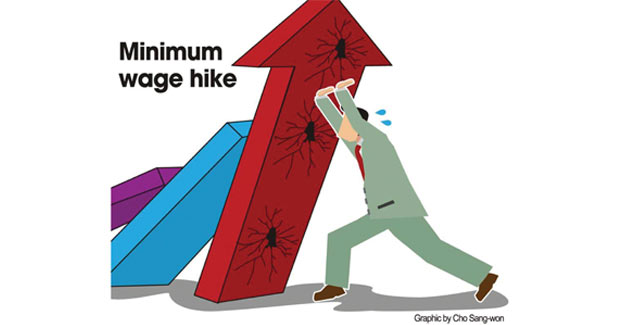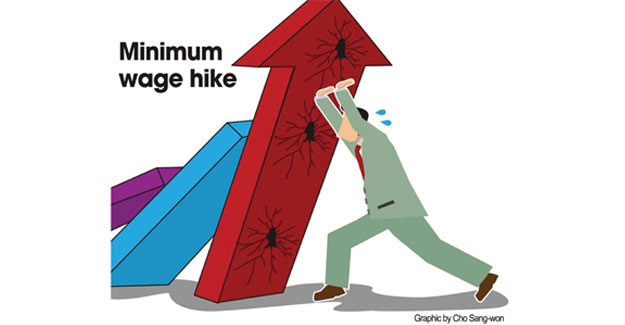
Minimum Wage Levels Across ASEAN
Minimum wage rates across ASEAN are rising gradually to match the region's increased cost of living and boost domestic demand. Several ASEAN nations - popular among foreign investors for their cheap labour - are facing pressures due to poverty and low economic growth. To combat inflation and prevent any outbreaks of labour unrest, such countries have increasingly been pushing for higher minimum wage levels and enacting new labour laws to protect workers' rights.
Despite rising salaries, minimum wages in the majority of ASEAN countries remain significantly lower than those in the developed economies of the world. For instance, the federal minimum wage in the United States is currently approximately US$1200-1300 per month - which is much higher than most of the ASEAN economies. The article highlights the latest statutory minimum wage levels in each of the ASEAN states with the exception of Brunei and Singapore, which do not have a mandatory minimum wage. Businesses must take note that the minimum wages in most countries vary regionally and do not include welfare costs.
The wages may also vary as per the industry and job specifications, and may be subject to periodic - national as well as local - regulatory changes. The table below provides current minimum monthly salary and minimum daily wage for full-time employees in ASEAN countries.
Cambodia
In Cambodia, the minimum wage standards exist mainly for the garment and footwear manufacturing industry in the country. The textile sector - including the garment and shoe industry generates over US$ 7 billion annually for the economy. In the last five years, wages for garment workers have increased over 150%, from US$ 61 per month in 2012 to US$ 153 in 2017. In 2018, the government further revised the minimum monthly wage of workers in the industry by 11%; that is, from January 1, 2018, the new wage for garment workers in the country is US$ 170 per month.
Though a significant hike, the wage increase in Cambodia does not impact the competitive advantage of its garment manufacturing industries as the government continues to delay taxing profits in the sector and eliminate export management fees.
Indonesia
Indonesia's labour market contains significant regional variation because wages are set at a provincial level by Governors through Wage Councils and District Wage Councils of the archipelago's 34 provinces. The minimum wage in Jakarta, at Rp 3,648,035 (US$257.73) is almost 2.5 times greater than in Yogyakarta, the province with the lowest minimum wage at Rp 1,454,154 (US$102.74). In smaller cities, the minimum wages are usually even lower.
Laos
Recently, the Laotian government increased the minimum wage for all businesses and factories in the country from 900,000 kip (US$106) to 1.1 million kip (US$130) a month, starting May 1, 2018. An increase of 11% - the latest hike is the eight of its kind since 1991 when the minimum wage was just 2,600 kip (US$0.31) in the country.
The higher minimum wage is beneficial for not just labourers in the country, but also businesses as it attracts the interest of labourers who may otherwise seek work in neighbouring countries that have higher minimum wages.
Malaysia
Malaysia is yet to announce its latest minimum wage rate; the new rate is estimated to rise to RM1,500 (US$ 363.5) a month in 2018. Currently, the minimum monthly wage for workers in Sabah and Sarawak is between RM800 (US$ 193.8) and RM920 (US$ 229.11), while for Peninsular Malaysia it is RM1,000 (US$ 249.03). The new wage would be standardised between private workers in Peninsular Malaysia with Sabah and Sarawak. However, the government is cautious of putting the entire burden of increased wages on the employers and may implement the minimum wage increase gradually over a period of five years.
Myanmar
Earlier this year, the government of Myanmar formally raised the country's daily minimum wage by 33% to 4800 Kyat (US$3.29). As per the government notification, the new wage is uniform across the nation, irrespective of the work type. The new law entitles employees to overtime, in addition to the minimum wage and requires employers to pay at least 75% of the minimum wage during the probation period of three months. The new wage, however, does not apply to small businesses that employ 10 people or fewer. Despite the increase, Myanmar remains the lowest compared to the minimum wages of other countries in Southeast Asia, even falling behind Cambodia, Laos, and Vietnam.
Comparing wages in the region, Myanmar's monthly minimum wages is estimated at only around US$98.88 per month, which is much less than the monthly average wage of US$130 in Laos, US$170 in Cambodia and US$145 in Vietnam.
Philippines
The Philippines has daily minimum wage rates that vary from region to region, ranging from P256 (US$4.80) to P512 (US$9.61) a day. The wages are set by tripartite regional wage boards located in every region. The country's average minimum wage rate is among the highest in ASEAN - as compared to its competitors Indonesia, and Vietnam.
Thailand
In Thailand, the nationwide daily minimum wage has been raised for the first time in three years as the country's military government attempts to do away with a lingering income disparity. In April, the wage committee announced new wage rate, between 308 baht (US$9.19) to 330 baht (US$9.85), varying from province to province; the average daily minimum wage rate in the country is 315.97 baht.
While the minimum wage rate is the highest in the provinces of Phuket, Chon Buri, and Rayong -at 330 baht (US$9.85) a day, the southernmost border provinces of Yala, Pattani, and Narathiwat - have minimum wage rate at 308 baht (US$9.19). The minimum daily minimum wage was previously 300 baht (US$9.17) in eight provinces and ranged from 305 (US$9.32) to 310 (US$9.48) baht in the others.
Vietnam
Following the country's rapid economic growth, in the past few years, the Vietnamese government has increased minimum wages to combat inflation. As a result, the average monthly minimum wage in the country increased from 2,580,000 (US$111) in 2017 to 3,370,000 (US$145) in 2018. This increase follows a 7.3 percent hike that took effect at the start of 2017. Currently, the minimum wage ranges from VND 2,760,000 (US$120.0) per month in remote areas to VND 3,980,000 (US$173.0) per month in the key cities of Hanoi, Hai Phong and Ho Chi Minh City. According to the latest government notification, the wages will further increase to between VND 2,920,000 (US$125.7) and VND 4,180,000 (US$180.0), in the respective regions, from January 1, 2019. The rising wages could weigh on the country's competitiveness as the neighbouring nations such as Laos and Myanmar have lower minimum wages.

Textile Excellence
If you wish to Subscribe to Textile Excellence Print Edition, kindly fill in the below form and we shall get back to you with details.








